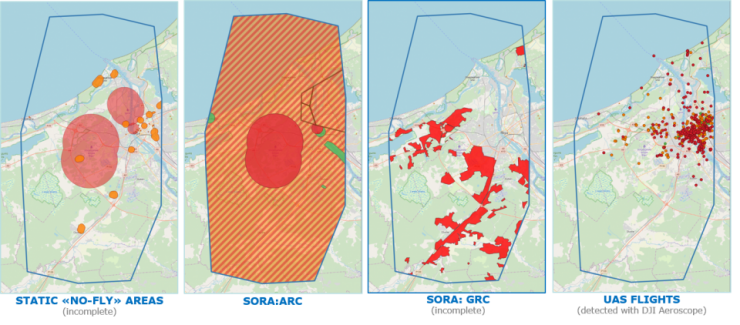European safety agency Eurocontrol has published the Riga Airspace Assessment report following a six-month long project with the Latvian Civil Aviation Authority. The report forms the basis for airspace design that integrates drone and other Unmanned Aircraft System (UAS) operations into Latvia’s Controlled Traffic Region (CTR) or any other volume of airspace. The main objective is to build up a full picture of airspace volumes. It provides an analysis of operations; infrastructure; restrictions; urban aspects; and air and ground risks.
Besides this, enough data was collected to draw up requirements for enabling drone operations to be integrated into the airspace safely. The study is the first essential step on a journey from airspace assessment to airspace design.
Eurocontrol experts analysed the way various airspace users operate in Riga CTR airspace. To do this, they interviewed: air traffic controllers; pilots, to understand the routes as actually flown; general aviation representatives; drone operators; and non-aviation entities. They analysed all manned air operations, Aeronautical Information Publications (AIP), all arrival and departures as well as restricted airspace. This data was used to build a real time picture of current operations and then to define airspace volumes in Riga CTR where it would be safe to operate unmanned aircraft. Importantly, they also identified which airspace volumes should be avoided because of safety, security, privacy or environmental concerns.
The next step was to define requirements to enable safe UAS operations. These requirements give drone operators all the elements they need to create a safety case for flying drones in the area. This assessment was unique because, unusually, it involved consultations with non-aviation institutions, such as the city council and port authority.
At a later stage, the report could also be used to help define a variety of requirements – such as geo-fencing, U-space services, etc, that are needed to make sure that existing operations will not suffer any adverse effect from the changes envisaged.
In the light of this assessment, Riga CTR can now use a new design concept in which aspects such as U-space and UAS geographical zones can be taken into consideration in the airspace design process. In addition to the report, a “UAS ATM Airspace Assessment Manual” will soon be published.
Eurocontrol plans to conduct its next airspace assessment with Estonia; followed by other member states.
For more information visit:




